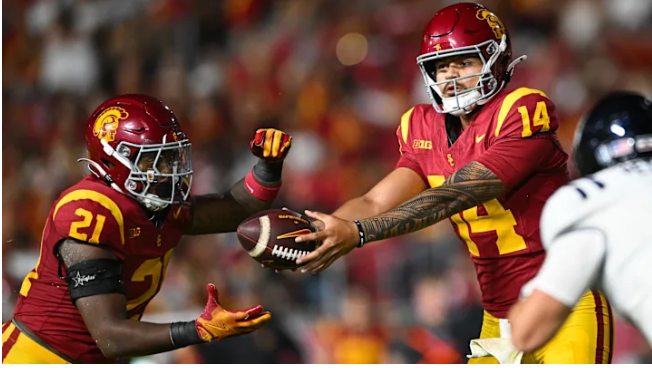Ground Game Glory: Why USC Trojans’ Running Backs Could Be the Cornerstone of Lincoln Riley’s High-Octane Offense in 2025
As the USC Trojans charge into the 2025 season, much of the attention will naturally gravitate toward Lincoln Riley’s signature: a fast-paced, explosive passing attack. Yet, in a subtle but powerful shift, the real engine that may drive USC’s success this year is the ground game. Specifically, the running backs room — brimming with depth, talent, and versatility — could very well become the cornerstone of Riley’s high-octane offense.
Lincoln Riley has long been known for his quarterback whisperer reputation, having developed stars like Baker Mayfield, Kyler Murray, and Caleb Williams. However, his best offensive teams have featured strong, dynamic rushing attacks. At Oklahoma, he leaned heavily on backs like Joe Mixon, Samaje Perine, and Kennedy Brooks, who complemented elite quarterback play with relentless, consistent production. Now at USC, Riley seems poised to return to that balanced offensive formula in 2025.
USC’s running back corps this season is not only deep but also diverse in skill sets. Leading the charge is an explosive feature back capable of ripping off chunk plays and finishing drives. Backing him up are bruising power runners, elusive change-of-pace options, and even hybrid backs who can line up in the slot. This wealth of talent allows Riley to tailor his run game to any defensive scheme and game situation, from power runs between the tackles to outside zone sweeps and screen passes out of the backfield.
Moreover, the Trojans’ offensive line — often a question mark in previous seasons — looks poised for a breakthrough. A blend of returning experience and talented recruits has brought both physicality and cohesion to the trenches. This development is crucial, as a strong offensive line not only protects the quarterback but also paves the way for a dominant rushing attack. If the line can control the line of scrimmage, the running backs have the vision and explosiveness to turn simple plays into game-changing moments.
Strategically, a stronger emphasis on the ground game could open up even more opportunities for Riley’s high-flying passing attack. Defenses that stack the secondary to limit big plays downfield may find themselves gashed by the run. Conversely, once opponents commit extra defenders to stop the run, Riley’s quarterbacks — likely dual-threat and armed with top-tier receivers — can exploit mismatches with play-action and RPO schemes. It’s a pick-your-poison dilemma for opposing coordinators.
Additionally, a reliable run game can give USC something they’ve lacked in recent high-pressure moments: control. In close games, especially in the rugged Big Ten schedule, the ability to run the ball effectively allows Riley to manage the clock, sustain drives, and keep the defense fresh.
















